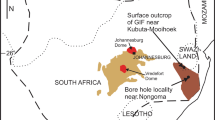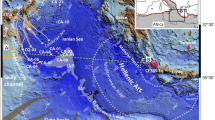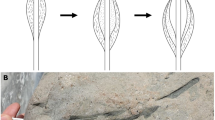Abstract
Stratigraphical interpretations of sediments beneath the Ross Ice Shelf, Antarctica, are derived from 58 short gravity cores (up to 1.22 m in length) taken by Webb and Brady through an ice access hole at the Ross Ice Shelf (RISP) Site J-9 (82°22′ S), 168°38′W) during the austral summers of 1977 and 1978. Some scientific reports on microfossil groups of diatoms1,2, foraminifera3, and silicoflagellates4 have interpreted the sedimentary succession as in situ and of Miocene age. Webb5 has also reported reworked clasts of Cretaceous foraminifera. Brady and Martin2 suggested that the pollen assemblage within the cores, similar to a reported Oligocene flora6, may have reflected a remnant of this flora living in the Miocene, but Wrenn7 has shown that these pollen have probably been reworked. However, Kellogg and Kellogg's8 diatom-based Pleistocene age determinations for sediment exposed on the sea floor at Site J9 relies on misquoted data from published literature and on misinterpreted taxonomy. Evidence is presented here that supports an earlier proposal that Miocene sediments crop out on the present sea floor.
This is a preview of subscription content, access via your institution
Access options
Subscribe to this journal
Receive 51 print issues and online access
$199.00 per year
only $3.90 per issue
Buy this article
- Purchase on Springer Link
- Instant access to full article PDF
Prices may be subject to local taxes which are calculated during checkout
Similar content being viewed by others
References
Brady, H. T. Antarct. J.U.S.A. 13, 123–4 (1978).
Brady, H. T. & Martin, H. Science 203, 437–8 (1979).
Webb, P. N. RISP Tech. Rep. 79–1 (University of Nebraska, 1979).
Ling, H. Y. 4th Symp. on Antarctic Geology and Geophysics, University of Adelaide (in the press).
Webb, P. N. J. R. Soc. N.Z. 11, 439–446 (1981).
Barrett, P. J. & Kemp, E. M. Nature 258, 507 (1975).
Wrenn, J. H. & Beckman, S. W. Nature 216, 187–189 (1982).
Kellogg, T. B. & Kellogg, D. E. Nature 293, 130–133 (1981).
McCollum, D. W. Init. Rep. DSDP Leg 28, 515–571 (1975).
Schrader, H. J. Init. Rep. DSDP Leg 35, 605–671 (1976).
Fenner, J., Schrader, H. J. & Wienigk, H. Init. Rep. DSDP Leg 35, 757–813 (1976).
Hayes, D. E. et. al. Init. Rep. DSDP Leg 28, 1–1017 (1975).
Author information
Authors and Affiliations
Rights and permissions
About this article
Cite this article
Brady, H. Interpretation of sediment cores from the Ross Ice Shelf Site J-9, Antarctica. Nature 303, 510–511 (1983). https://doi.org/10.1038/303510a0
Received:
Accepted:
Published:
Issue Date:
DOI: https://doi.org/10.1038/303510a0
This article is cited by
Comments
By submitting a comment you agree to abide by our Terms and Community Guidelines. If you find something abusive or that does not comply with our terms or guidelines please flag it as inappropriate.



